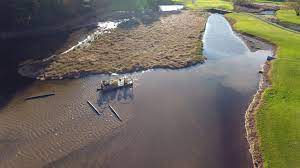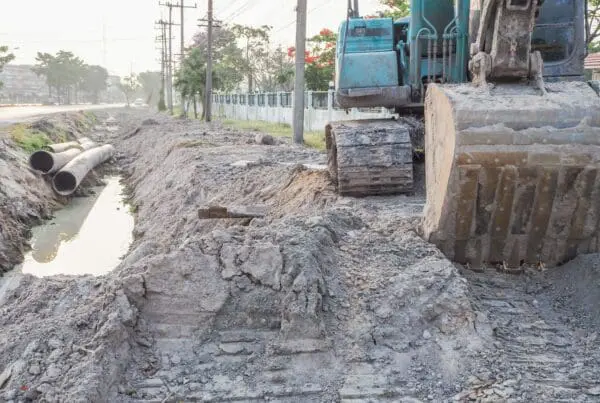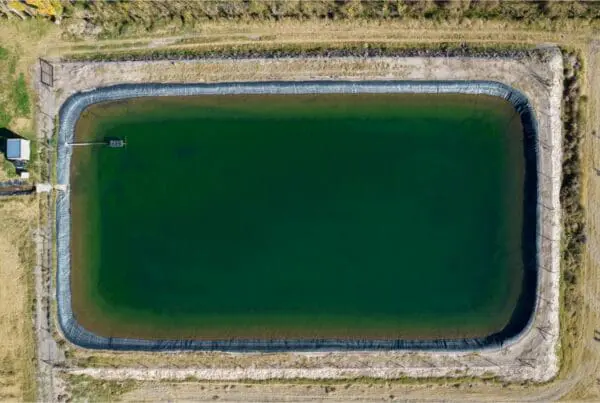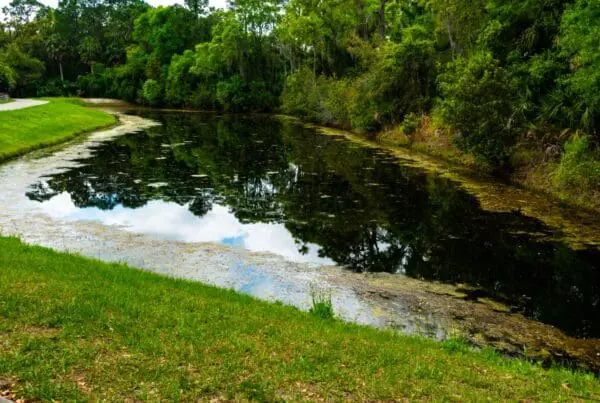Dredging is the process of removing sediment from the bottom of ponds and lakes to improve water quality, reduce the risk of flooding, and restore the natural beauty of aquatic ecosystems.
Dredging addresses problems such as excessive nutrient input, sediment deposition, and water contamination. It helps restore aquatic habitats for fish, amphibians, and other wildlife that rely on healthy aquatic ecosystems. By dredging a pond or lake when necessary, you will be helping to maintain the balance of life in the water and reducing risks associated with flooding and pollution.
What are the Types Dredging?
There are three main types of dredging: mechanical, hydraulic, and environmental.
Mechanical
Mechanical dredging uses machines like bulldozers or forklifts. Mechanical dredging is the most common but can be expensive and disruptive to nearby areas.
Hydraulic
Hydraulic dredging uses water pressure to push the dirt or sand. Hydraulic dredging can create large amounts of sediment.
Environmental
Environmental dredging is effective for cleaning up polluted areas. However, this type of dredging requires specialized equipment and is often costly.
When is Dredging Necessary?
It is necessary when there is an increase in sediment build-up and a decrease in navigational access. It is also essential when navigation channels become shallow due to sediment build-up, land subsidence, and the changing of river courses.
What Equipment is Used for Dredging?
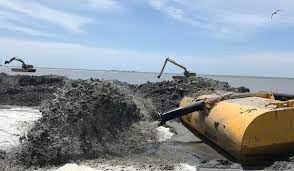 Equipment includes excavators, dredgers, and pumps.
Equipment includes excavators, dredgers, and pumps.
Excavators
Excavators are heavy machinery designed to dig the earth using buckets or a large scoop-like device. They are commonly used in construction, mining, and other excavation projects.
Dredgers
Dredgers are machines specially designed to dredge waterways, harbors, or ports to collect sediment or remove obstructions from the waterway. Different sources, including diesel engines, electric motors, and hydraulic systems, can power these machines.
Pumps
Pumps are often used to remove sediment from a waterway or harbor and are typically powered by electricity or diesel engines.
The Dredging Process
Below is a basic step-by-step explanation of the process. Specifics will vary depending on the size of the pond or lake, the depth of the water, the type of sediment being removed, the level of contamination, and other factors.
- Start by surveying the area to be dredged and creating a plan to reduce negative impact from the project.
- Remove the sediment or mud using the appropriate tools and machinery for the size of the job.
- Use a dewatering process to eliminate any excess water in the sediment and make it easier to transport.
- Dispose of the dredged material in an appropriate location as permitted by law.
- Monitor the area after project completion to ensure everything is going smoothly.
What to Consider Before Dredging
This process can cause significant disruption to the ecosystem of a body of water. Environmental effects may include changes in water quality, destruction of natural habitat and wildlife, and imbalance in the water chemistry. The impacts of dredging can be physical, chemical, biological, and cultural. Failing to take these factors into account can impact the outcome of a dredging project. Learn about these 4 critical factors for success in dredging projects.
Appropriate dredging plans should consist of assessing the potential impacts of dredging on the environment and any potential risks that come with it. This includes legal risks. For example, if mud is contaminated with metals or other toxic material, it must be disposed of properly and with care. This includes ensuring that the appropriate permits are obtained and that there is a complete record of the transportation and disposal process.
Conclusion
PondMedics understand the potential impacts of dredging is essential for getting the job done correctly. We are familiar with local and state laws, regulations, and possible environmental effects that could arise from a dredging project. Through our DredgeSmart division, our engineers and specialists identify any potential risks associated with a project and suggest ways to minimize those risks. Contact us to learn more.
